Fusion energy breakthrough sparks calls for more government backing
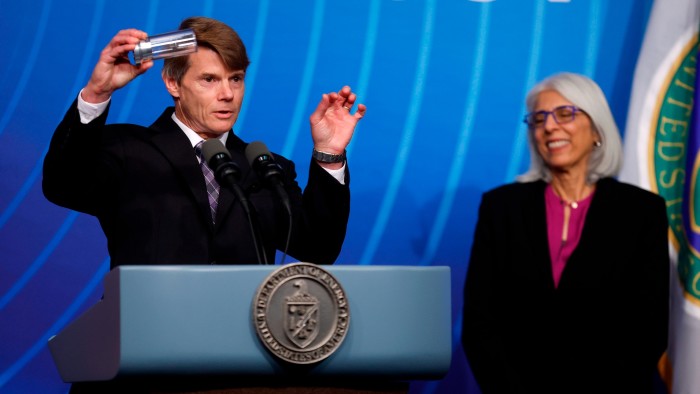
Simply sign up to the Energy sector myFT Digest -- delivered directly to your inbox.
The fusion energy industry is calling for greater political support, hopeful that a landmark breakthrough by US scientists last year has given policymakers confidence to bet on the nascent sector.
Physicists have been trying to harness the fusion reaction that powers the sun for decades but, until December, no group had been able to produce more energy from a fusion reaction than it consumed.
That goal, known in the field as scientific energy gain, was finally achieved on December 5 at the National Ignition Facility (NIF) in California, using the world’s biggest laser. Jennifer Granholm, US energy secretary, called it “one of the most impressive scientific feats in the 21st century”.
However, even fusion’s most ardent supporters, who tout its potential to deliver abundant zero-carbon energy, say it will take at least a decade, and probably longer, to translate the NIF achievement into commercially viable power. Sceptics joke that, at any given point in time, the dream is always ‘at least 30 years away’.
Nevertheless, fusion executives hope the pace of progress can now accelerate.
“The next step is: how does the government incentivise this already rolling push?” says Andrew Holland, chief executive of the Fusion Industry Association, a trade body.
Since the 1960s, when Soviet scientists fused atoms to generate energy for the first time, most fusion research has taken plan in publicly funded laboratories like the NIF, or the Joint European Torus in Oxford, England.
In the past 20 years, such facilities have been complemented by a growing number of privately funded start-ups hoping to speed up the achievement of energy gain and, ultimately, of commercial fusion power. The FIA estimates that at least $5bn has been raised by private fusion companies, much of it in the past 18 months.
So far, though, that funding has come largely from billionaire investors and venture capitalists. There has been little government support.
“At some point in every nascent industry, especially in the energy industry, which is so heavily influenced by public policy, the government comes in and puts its thumb on the scale,” says Holland.
The US is slightly ahead of the field, Holland adds. In March 2022, the White House announced plans to develop “a bold decadal vision to accelerate fusion”. And, in August, included $280mn in the Inflation Reduction Act for the Department of Energy to support fusion projects.
Holland expects the NIF breakthrough to lead to further federal support for fusion start-ups in the US, and similar policies to be adopted in the UK, the EU and Japan.
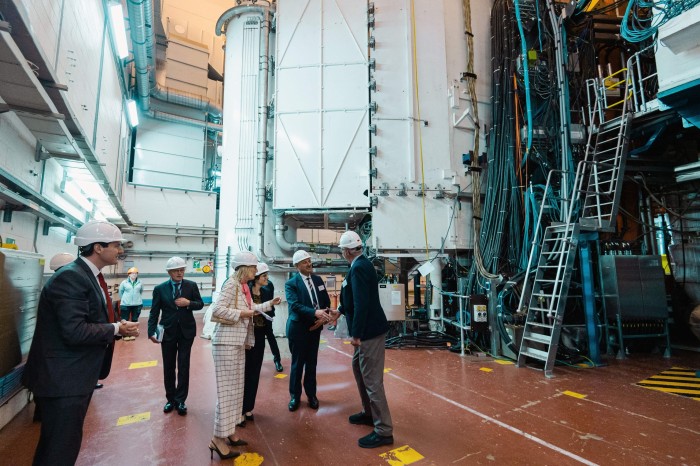
The UK Atomic Energy Authority has conducted publicly funded fusion research at its Culham Campus near Abingdon, Oxfordshire, since 1965. In recent years, it has become arguably the world’s leading location for public-private partnerships.
Most of this public and private sector fusion research has focused on magnetic confinement fusion. This is a process in which a plasma of two hydrogen isotopes, usually deuterium and tritium, is held in place with powerful magnets and heated to extreme temperatures so that the atomic nuclei fuse, generating energy.
Out of the 35 start-ups identified by the FIA trade body, at least two-thirds are working on magnetic confinement fusion. One of those companies, Canada’s General Fusion, is building its first ever demonstration plant at Culham, with support from UKAEA.
The NIF breakthrough has also focused attention on a different area of research called inertial confinement, in which fusion conditions are achieved by compressing a tiny pellet of the hydrogen fuel using a laser — as at NIF — or in some cases using a projectile.
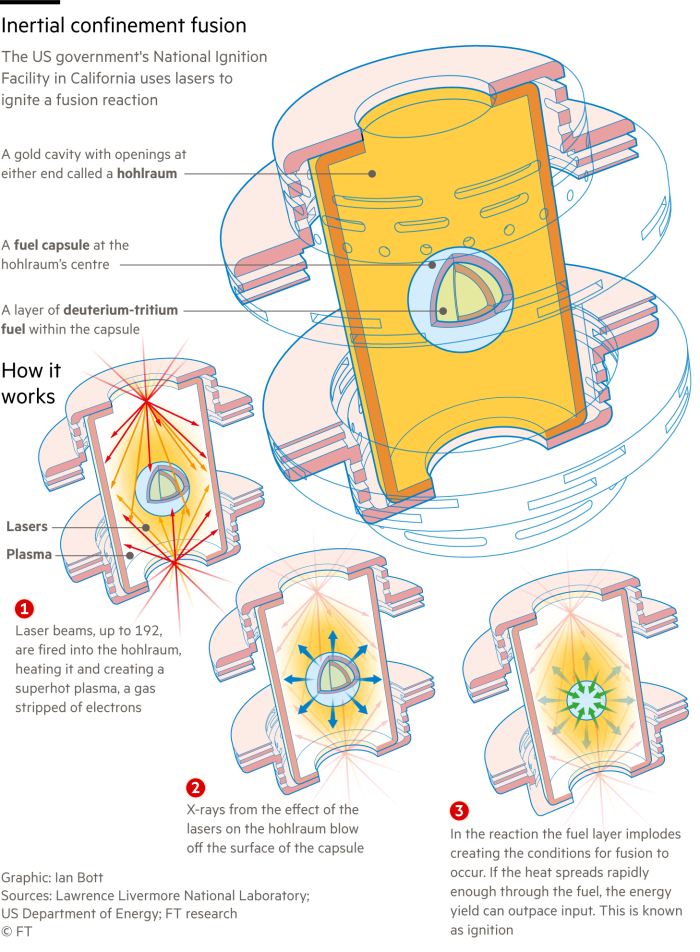
To date, inertial fusion companies have raised only about $180mn out of the $5bn raised across the sector, but are likely to attract more investment this year following the US breakthrough, says Holland.
In January, the Oxford-based inertial fusion company First Light Fusion signed an agreement with UKAEA to build its first demonstration plant, also at Culham, at a cost of about £30mn.
Meanwhile, in Germany, the inertial fusion company Marvel Fusion, one of the few fusion start-ups in the EU, is seeking to raise €350mn to build a technical demonstrator for a laser-driven technology. Its chief executive, Moritz von der Linden, says this could be a “paradigm shift” for the sector.
But the German government is doing too little to help, von der Linden argues — even though it will need a reliable, abundant energy source to replace natural gas if it wants to maintain the dominance of its globally revered industrial sector.
“It is a disadvantage to be in Germany,” von der Linden argues. “Things are moving too slowly, and they’re not moving at scale. The main part missing in Germany is a clear political commitment that the government is supporting this, the next is subsidies.”
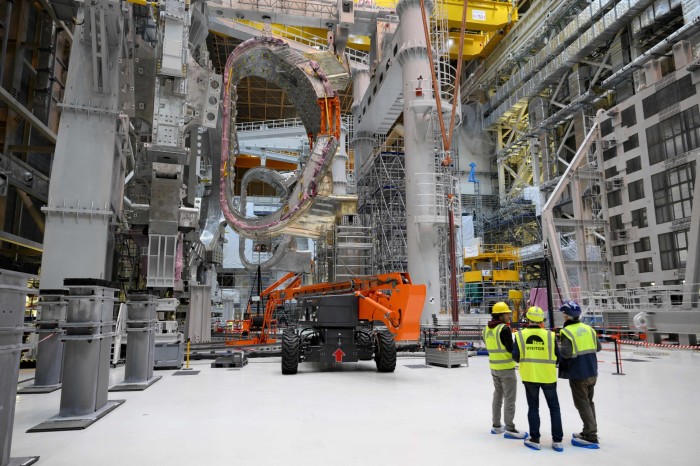
Over the longer term, the German government needs to step up as a “potential customer” in the same way that Nasa, the US space agency, supported the growth of Elon Musk’s SpaceX, he suggests.
The EU’s main fusion investment is in the International Thermonuclear Experimental Reactor, a global research initiative backed by 35 countries to build the world’s largest magnetic confinement machine in France. The construction costs were initially estimated at €5bn but have risen to as much as €20bn. The EU is responsible for 45 per cent of the budget.
“It was a mistake to just bet on one horse,” von der Linden says of the EU’s focus on Iter. “You’ve got to bet on the race and then see who wins it.”
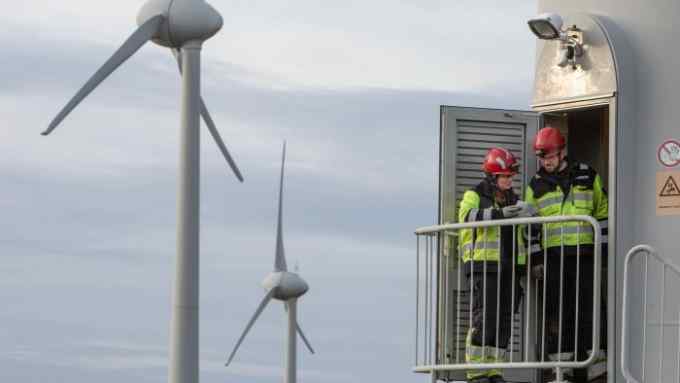
Comments